NEWS
Hong Kong’s First Buddhist Art Museum Inaugurated at Tsz Shan Monastery
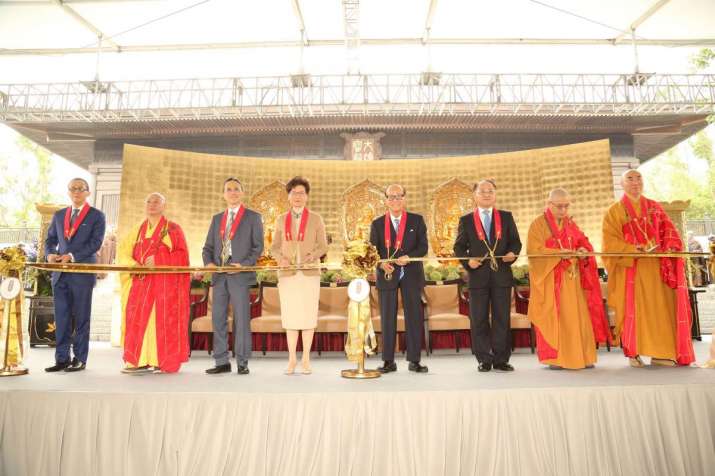 Hong Kong Chief Executive Carrie Lam, Li Ka-shing, fourth from right, director of Liaison Office of the Central People's Government in the Hong Kong Wang Zhimin, third from right, chairman of the board of Tsz Shan Monastery Victor T K Li, third from left, Tsz Shan Monastery abbot Ven. Thong Hong, second from right, deputy president of the Buddhist Association of China Ven. Ming Sheng, second from left, president of the Hong Kong Buddhist Association Ven. Kuan Yun, first from right, and deputy chairman of the board of Tsz Shan Monastery Richard Li officiate at the grand opening ceremony at Tsz Shan Monastery. From ckh.com.hk
Hong Kong Chief Executive Carrie Lam, Li Ka-shing, fourth from right, director of Liaison Office of the Central People's Government in the Hong Kong Wang Zhimin, third from right, chairman of the board of Tsz Shan Monastery Victor T K Li, third from left, Tsz Shan Monastery abbot Ven. Thong Hong, second from right, deputy president of the Buddhist Association of China Ven. Ming Sheng, second from left, president of the Hong Kong Buddhist Association Ven. Kuan Yun, first from right, and deputy chairman of the board of Tsz Shan Monastery Richard Li officiate at the grand opening ceremony at Tsz Shan Monastery. From ckh.com.hkWith Hong Kong business tycoon Li Ka-shing in attendance, Tsz Shan Monastery on Wednesday formally opened the city’s first Buddhist art museum, housed in a 2,230-square-meter research and exhibition center near the monastery’s 76-meter Guan Yin statue.
The museum’s vast collection includes 100 Buddha statues from across Buddhism’s historical and geographical development, along with 43 hand-copied Dunhuang sutras. Many of the statues were donated by Li himself, while others were acquired directly by the Li Ka Shing Foundation from mainland China, India, Japan, Myanmar, and other East and Southeast Asian countries. The museum will be free to visitors from 1 May.
More than 2,000 guests attended the opening ceremony, including nearly 600 volunteers from Tsz Shan Monastery. Both the monastery and museum are sponsord by the Li Ka Shing Foundation, founded in 1980, which supports education and medical projects in 27 countries around the world. The monastery opened in 2015 and has hosted more than 1 million visitors as of the end of 2018. It is located in the hills of Pat Sin Leng in Hong Kong’s New Territories and covers 4.7 hectares.
“There is no guiding algorithm to help us crack those deep practical questions that are central to our lives,” said Li. “Who am I? What should I do with my life? How do I create the good future? And the bold and hard question: in what direction should we move forward and thrive together? I hope Tsz Shan Monastery can be a space for such quiet contemplation and orientations.” (South China Morning Post)
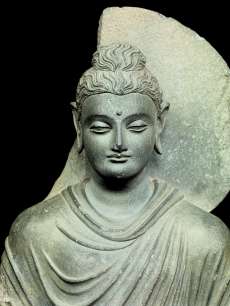 Standing Shakyamuni Buddha, Gandhara Kushan dynasty, second to third century CE. From ckh.com.hk
Standing Shakyamuni Buddha, Gandhara Kushan dynasty, second to third century CE. From ckh.com.hk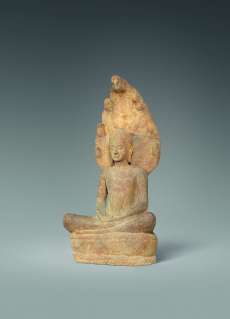 Seated Buddha protected by the Naga king, Cambodia, Khmer Empire 12th–13th century. From ckh.com.hk
Seated Buddha protected by the Naga king, Cambodia, Khmer Empire 12th–13th century. From ckh.com.hk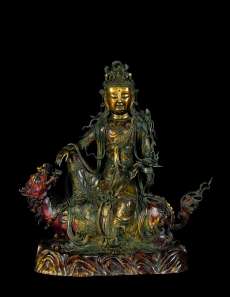 Guanyin Bodhisattva seated on lion mount, China, Ming dynasty, 15th century. From ckh.com.hk
Guanyin Bodhisattva seated on lion mount, China, Ming dynasty, 15th century. From ckh.com.hk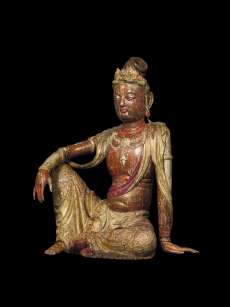 Seated Guanyin Bodhisattva, China, Liao dynasty (916-1125 CE). From ckh.com.hk
Seated Guanyin Bodhisattva, China, Liao dynasty (916-1125 CE). From ckh.com.hkIn his speech, Li quoted the Diamond Sutra, “All phenomena are like a dream, an illusion, a bubble, a phantom,” he said. “For me, Buddhist philosophy has guided me through apprehensions, fears and vicissitudes.” (The Standard)
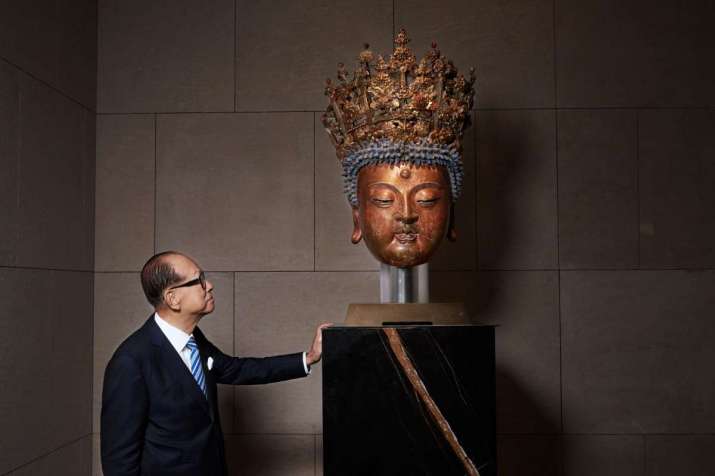 Buddha head with exquisitely constructed regal crown. Ming dynasty (1368-1644). Shares similarities in style with other Buddha statues produced in Shanxi Province. From ckh.com.hk
Buddha head with exquisitely constructed regal crown. Ming dynasty (1368-1644). Shares similarities in style with other Buddha statues produced in Shanxi Province. From ckh.com.hkHong Kong’s chief executive, Carrie Lam Cheng Yuet-ngor, also officiated at the ceremony, saying: “The tranquil atmosphere of Tsz Shan Monastery offers the busy world a blissful retreat to put the buzzing world behind and relax the mind. The invaluable collection . . . housed in the Tsz Shan Monastery Buddhist Art Museum represents not only the enlightened ideals and cultural sphere of Zen Buddhism, but will also provide the basis for cultural programmes and activities.” (South China Morning Post)
Also in attendance were Wang Zhimin, director of the Liaison Office of the Central People's Government in the Hong Kong Special Administrative Region, and Ven. Ming Sheng, vice president of the Chinese Buddhist Association.
Tsz Shan Monastery (Tsz Shan literally means Benevolent Hill) can be visited by appointment only, with a daily quota of 400 visitors. Along with the large Guan Yin statue and art museum, the monastery features a Ksitigarbha Bodhisattva Hall, a Bell Tower, a Drum Tower, and a Library of Buddhist Texts. In a corner of a courtyard, one can also find a pond with water lilies and lotus flower, which symbolize rebirth in the Pure Land. (Chinese University of Hong Kong News)
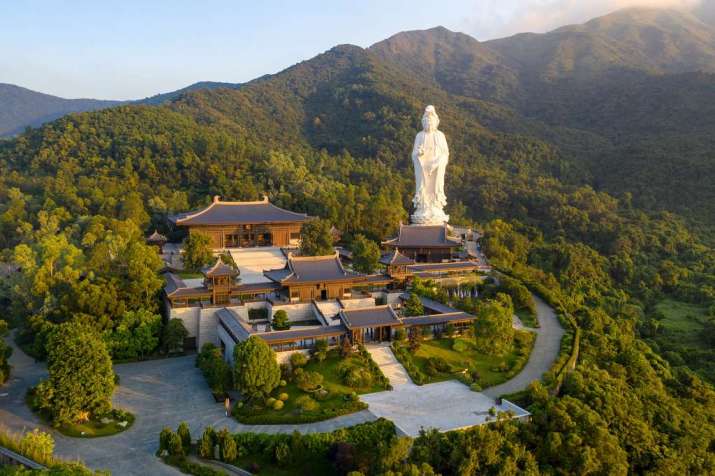 Tsz Shan Monastery in Hong Kong’s Pat Sin Leng hills in the New Territories. From flickr.com
Tsz Shan Monastery in Hong Kong’s Pat Sin Leng hills in the New Territories. From flickr.comSee also
Peace, blessings for those who come as Li and sons open Buddhist museum (The Standard)
Worldly matters put on hold as Li Ka-shing opens Hong Kong’s first Buddhist art museum (South China Morning Post)
Ho Puay-peng on Tsz Shan Monastery—Spirituality, Antiquity and Modernity (Chinese University of Hong Kong News)
Tsz Sham Monastery
Related news from Buddhistdoor Global
Hong Kong Heritage Museum Displays Digital Reproductions of the Mogao Caves of Dunhuang
Hong Kong Exhibition Showcases Ancient Heritage of the Silk Road
The Kimbell Art Museum Exhibits Extensive Private Collection of Textiles, Ming Porcelain, Buddhist Art, and Jade
Portland Art Museum to Repatriate Rare Buddhist Painting to Korea
Related features from Buddhistdoor Global
Buddhistdoor View: A Tale of Two Sanctuaries
The Making of Buddhist Wood Sculptures in China
Highlights of Buddhist Art at the Norton Simon Museum
“May this image win me virtue”: The Courtauld Institute of Art’s Proceedings of the Buddhist Art Forum 2012














